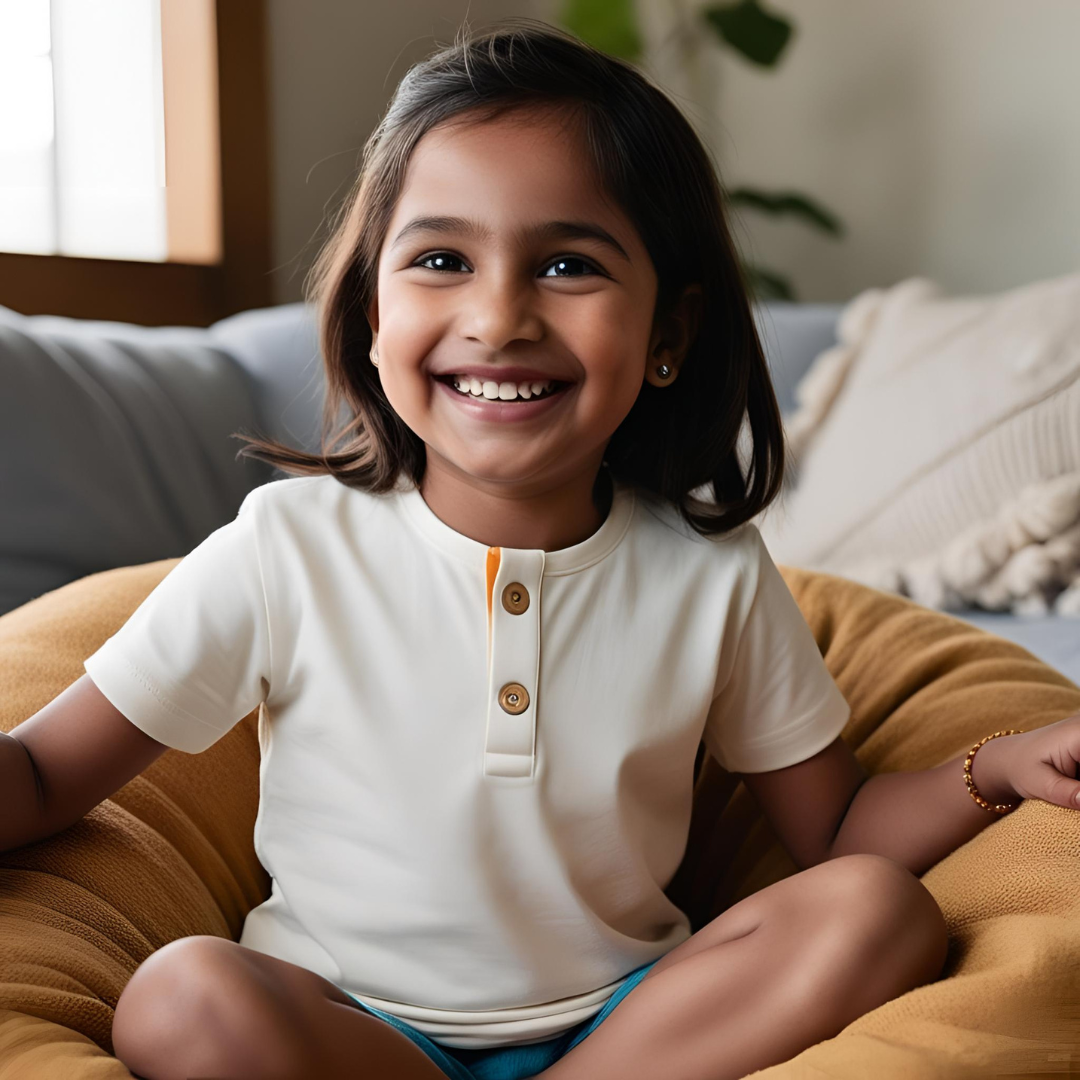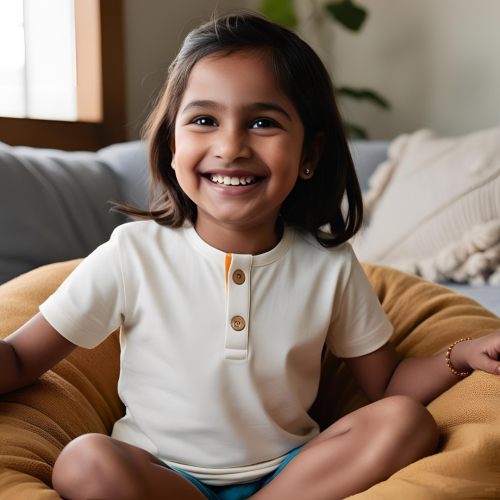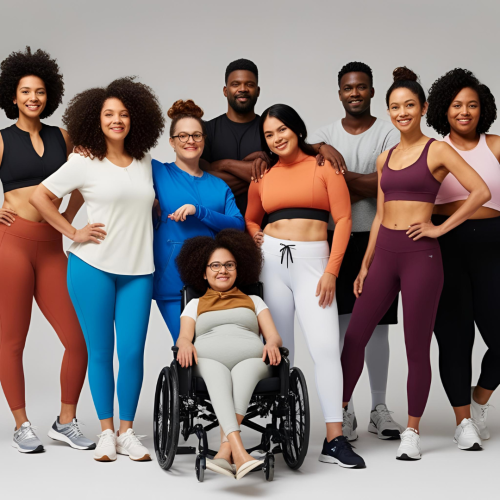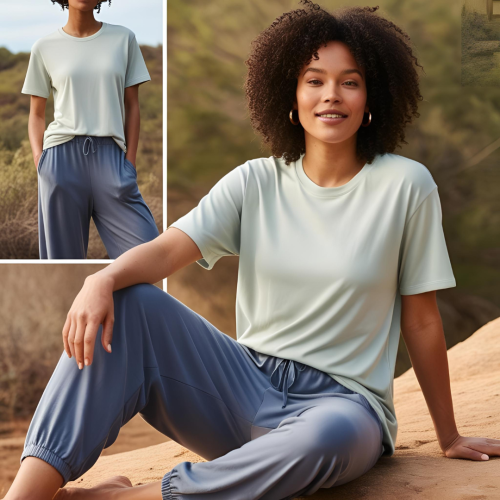Adapted children’s fashion has gained increasing attention, especially when it comes to meeting the specific needs of children with autism. Clothing can have a significant impact on a child with autism’s well-being and daily routine, as they often experience heightened sensory sensitivity. For these children, choosing the right clothes can contribute to their comfort, self-esteem, and development, while making their daily lives more practical and enjoyable.
In this article, we will explore what parents of autistic children need to know about adapted fashion, focusing on essential features like Velcro, soft fabrics, and the absence of internal seams. We will also discuss how these adaptations can transform the dressing experience and how to ensure that clothes meet the sensory needs of the child.
Why Is Adapted Fashion Important for Autistic Children?
Children with autism often experience sensory processing differences, meaning that certain stimuli, such as seams, labels, rough fabrics, or even the sensation of certain types of clothing, can be uncomfortable or even painful. This discomfort can cause distraction, anxiety, and even meltdowns. For these children, wearing “normal” clothes can be a real daily challenge.
Adapted fashion comes as a support and accommodation tool. When someone feels physically comfortable, they can focus on other activities—such as studying, working, or socializing. In other words, it directly impacts the quality of life and self-esteem of children.
Additionally, this approach is also valuable for children, the elderly, and people with reduced mobility, as it provides independence by making dressing and undressing easier. Even those without any clinical condition can benefit from the lightness, practicality, and well-being that sensory clothing offers.
Features of Adapted Fashion for Autistic Children
1. Velcro Instead of Buttons and Zippers
Traditional fasteners, such as buttons and zippers, can be difficult to handle and uncomfortable for many autistic children. Velcro, on the other hand, is a practical and comfortable solution. It allows children to dress themselves more easily, providing independence. Furthermore, Velcro eliminates discomfort caused by the pressure of buttons and zippers against the skin, as it is soft and adjustable.
Clothes with Velcro are also ideal for children who have fine motor difficulties or coordination challenges, as Velcro is simple to manage and adjust.
2. Soft and Comfortable Fabrics
Another essential aspect of adapted children’s fashion is fabric choice. Autistic children often have sensitive skin and can be bothered by rough or synthetic fabrics. Therefore, it is crucial to opt for natural, soft, and breathable materials, such as organic cotton, bamboo, or modal.
These fabrics are pleasant to the touch and provide comfort without causing irritation. In addition, natural fabrics help regulate body temperature, preventing excessive heat or sweating, which is particularly important for autistic children who have difficulty with temperature regulation.
3. Absence of Internal Seams
Internal seams are another factor that can be uncomfortable for many children with autism. They can cause constant friction against the skin and lead to irritation. Seamless clothing or garments with external seams are an excellent choice for these children, as they reduce the risk of discomfort.
Brands that produce adapted fashion for children often use invisible seams or external seams to prevent children from feeling any friction while wearing the clothes. This can significantly improve the dressing experience and increase the acceptance of clothing by the child.
4. Easy-to-Wear and Remove Clothing
Practicality is another essential point when it comes to adapted children’s fashion. Clothes with simple fasteners, like Velcro, and designs that require minimal adjustments are perfect for encouraging independence and making dressing easier.
Furthermore, clothes with elastic waistbands or looser fits allow for more freedom of movement, which is important for children who struggle with tight or restrictive clothing.
How to Choose the Right Clothes for Your Autistic Child
Now that you know some of the key features of adapted children’s fashion, it’s important to understand how to choose the right clothing for your child. Here are some tips:
1. Look for Visible or Removable Labels
Clothing labels are one of the biggest sources of discomfort for many autistic children. Look for clothes with visible or, preferably, removable labels. Brands that produce adapted fashion often print the information directly on the fabric, eliminating the need for internal labels.
2. Try Different Styles and Fabrics
Every child has their own preferences when it comes to comfort. Therefore, it’s important to try different types of fabrics and clothing styles until you find those that your child enjoys. Clothes with looser cuts, soft fabrics, and that don’t irritate the skin are usually the most suitable.
3. Choose Clothes that Promote Independence
If your child is at a stage where they can start dressing themselves, look for clothes that make this process easier. Clothes with Velcro, elastic waistbands, and easy-to-manage fasteners are perfect for encouraging your child’s independence.
4. Consider Your Child’s Sensory Preferences
In addition to the clothes themselves, it’s essential to consider your child’s sensory preferences. Some children may prefer tighter clothes (like form-fitting t-shirts), while others may feel more comfortable with looser pieces. Pay attention to how your child reacts to clothes to make choices that meet their sensory needs.
Adapted children’s fashion has the power to transform the daily lives of autistic children by providing comfort, practicality, and independence. By choosing clothes with features like Velcro, soft fabrics, and the absence of internal seams, parents can ensure their children feel comfortable and confident in their clothing. Adapted fashion not only makes daily life easier but also contributes to a child’s self-esteem and promotes a more inclusive and welcoming environment.





